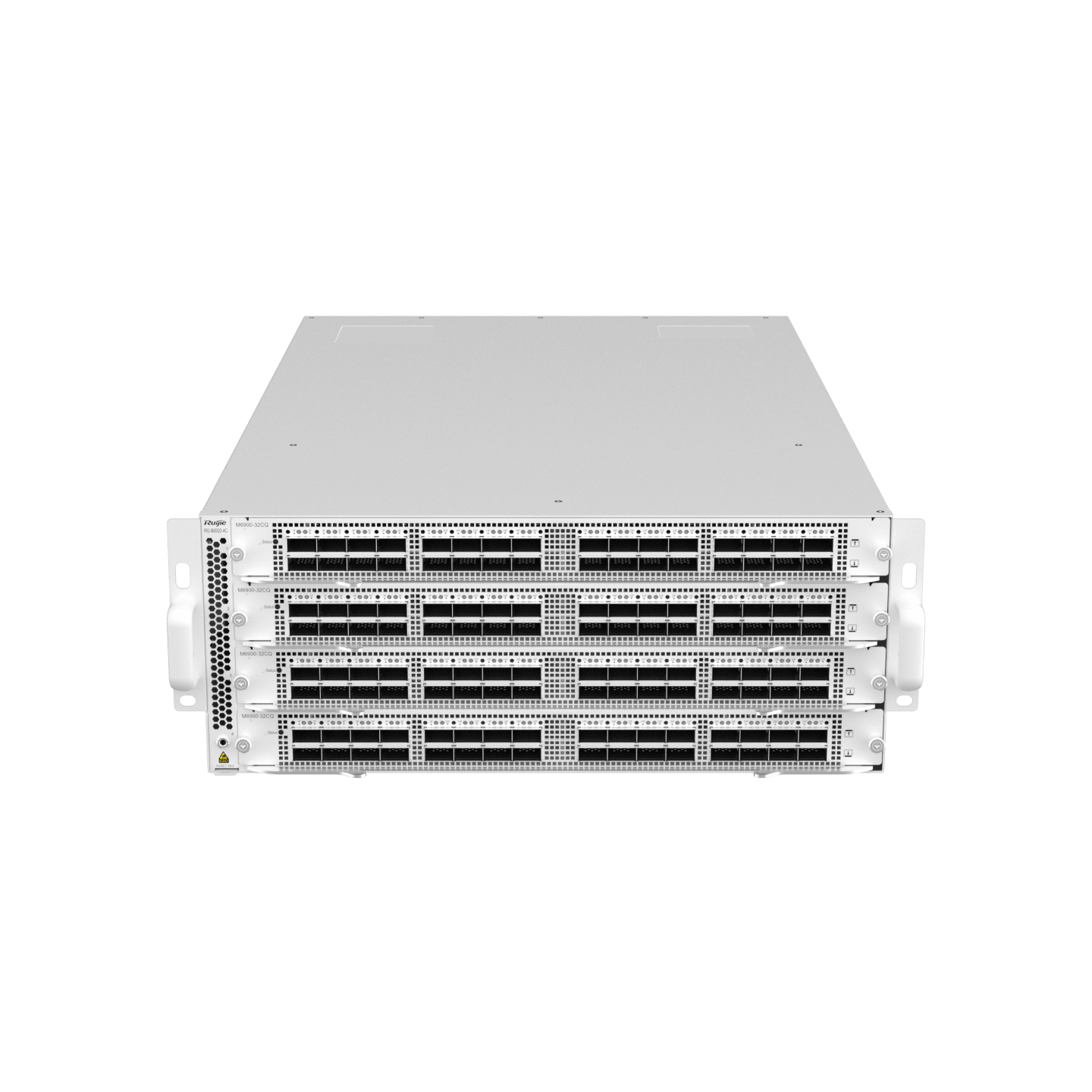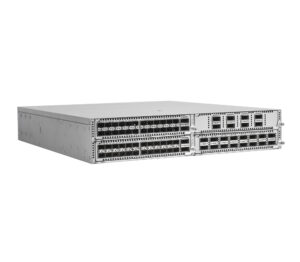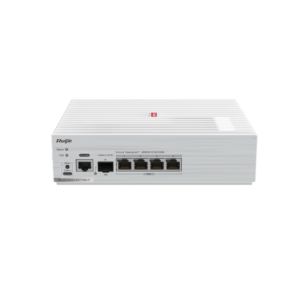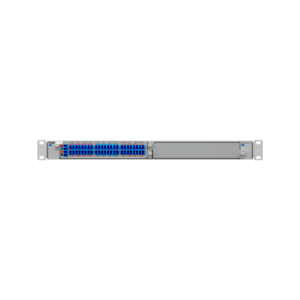Hardware Specifications
| System Specifications | RG-S6920-4C |
| Ports | 100GE/400GE ports |
| Expansion Modules | Four expansion modules, with each module supporting 32 × 100GE ports |
| Expansion Slots | Four power supply module slots
Six fan module slots |
| Management Port | One management port, one console port, and one USB port, compliant with the USB2.0 standard |
| Switching Capacity | 25.6 Tbps |
| Packet Forwarding Rate | 8000 Mpps |
| 802.1Q VLAN | 4094 |
| Dimensions and Weight | RG-S6920-4C |
| Dimensions (W × D × H) |
442 mm × 173.5 mm × 735 mm, 4 RU |
| Weight | About 43.5 kg (including all line cards, power supply modules, and fans) |
| Power Supply and Consumption | RG-S6920-4C |
| Maximum Power Consumption | 1950 W |
| AC | Rated voltage range: 100 VAC to 240 VAC, 50 Hz to 60 Hz
Maximum voltage range: 90 VAC to 264 VAC, 50 Hz to 60 Hz |
| High-voltage DC | Input voltage range: 192 VDC to 288 VDC |
| Environment and Reliability | RG-S6920-4C |
| Operating Temperature | 0°C to 40°C |
| Operating Humidity | 10% to 90% RH (Non-condensing) |
Software Specifications
| Software Specifications | RG-S6920-4C |
| L2 Protocols | IEEE802.3ad (Link Aggregation Control Protocol), IEEE802.1p, IEEE802.1Q, IEEE802.1D (STP), IEEE802.1w (RSTP), IEEE802.1s (MSTP), IGMP Snooping, MLD Snooping, Jumbo Frame (9 KB), IEEE802.1ad (QinQ and selective QinQ), GVRP |
| L3 Protocols (IPv4) | BGP4, OSPFv2, RIPv1, RIPv2, MBGP, LPM Routing, Policy-based Routing (PBR), Route-policy, Equal-Cost Multi-Path Routing (ECMP), WCMP, VRRP, IGMP v1/v2/v3, DVMRP, PIM-SSM/SM/DM, MSDP, Any-RP |
| IPv6 Basic Protocols | Neighbor Discovery, ICMPv6, Path MTU Discovery, DNSv6, DHCPv6, ICMPv6, ICMPv6 redirection, ACLv6, TCP/UDP for IPv6, SNMP v6, Ping/Traceroute v6, IPv6 RADIUS, Telnet/SSH v6, FTP/TFTP v6, NTP v6, IPv6 MIB support for SNMP, VRRP for IPv6, IPv6 QoS |
| IPv6 Features | Static routing, ECMP, PBR, OSPFv3, RIPng, BGP4+, MLDv1/v2, PIM-SMv6, manual tunnel and IPv4 over IPv6 tunnel |
| Data Center Features | PFC, ECN, and other data center features
M-LAG RDMA OpenFlow 1.3 |
| Visualization | gRPC
sFLOW sampling INT |
| QoS | Mapping of IEEE 802.1p, DSCP, and ToS priorities ACL-based traffic classification Priority marking/remarking Multiple queue scheduling mechanisms, including SP, WRR, DRR, SP+WRR, and SP+DRR Congestion avoidance mechanisms such as WRED and tail discarding |
| HA Design | GR for RIP/OSPF/BGP, BFD, DLDP, REUP dual-link fast switching, RLDP unidirectional link detection, 1+1 power redundancy and fan redundancy, and hot swapping for all cards and power supply modules |
| Security Features | Network Foundation Protection Policy (NFPP), CPP, DDoS attack defense, illegitimate data packet detection, data encryption, source IP spoofing prevention, IP scanning prevention, RADIUS/TACACS, IPv4/v6 packet filtering by basic ACL, extended ACL or VLAN-based ACL, plaintext-based and MD5 ciphertext-based authentication for OSPF, RIPv2, and BGPv4 packets, telnet login and password mechanisms for restricted IP addresses, uRPF, broadcast packet suppression, DHCP Snooping, ARP spoofing prevention, ARP check, and hierarchical user management |
| Management Mode | SNMP v1/v2/v3, telnet, console, MGMT, RMON, SSHv1/v2, FTP/TFTP, NTP, Syslog, SPAN/RSPAN/ERSPAN, ZTP, NETCONF, Python, fan and power alarm function, temperature alarm function, and configuration rollback |
| Other Protocols | DHCP Client, DHCP Relay, DHCP Server, DNS Client, UDP relay, ARP Proxy, and Syslog |





